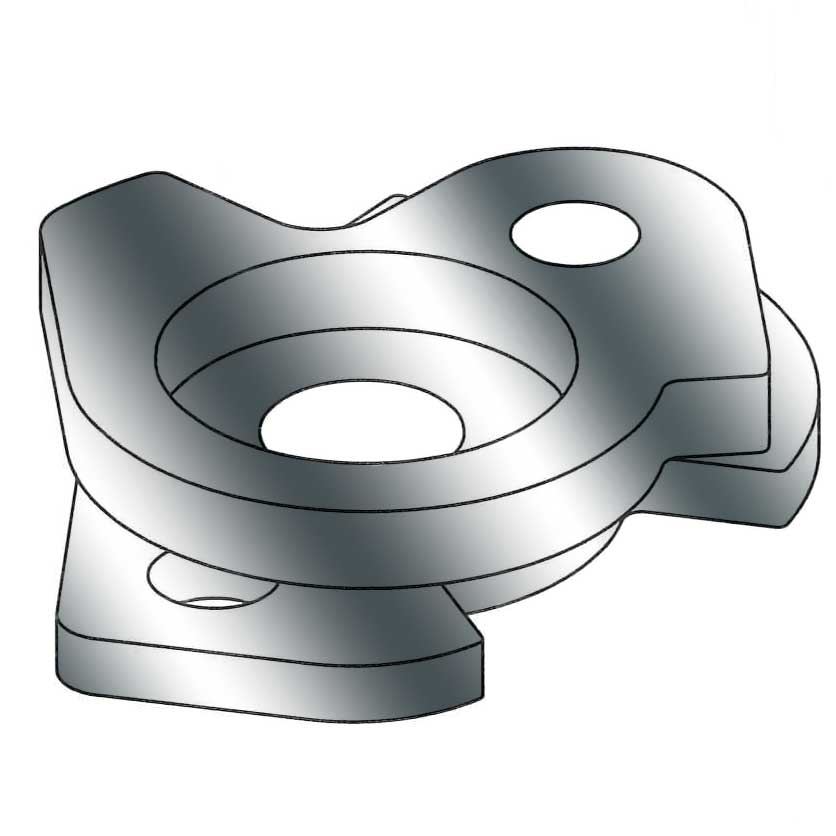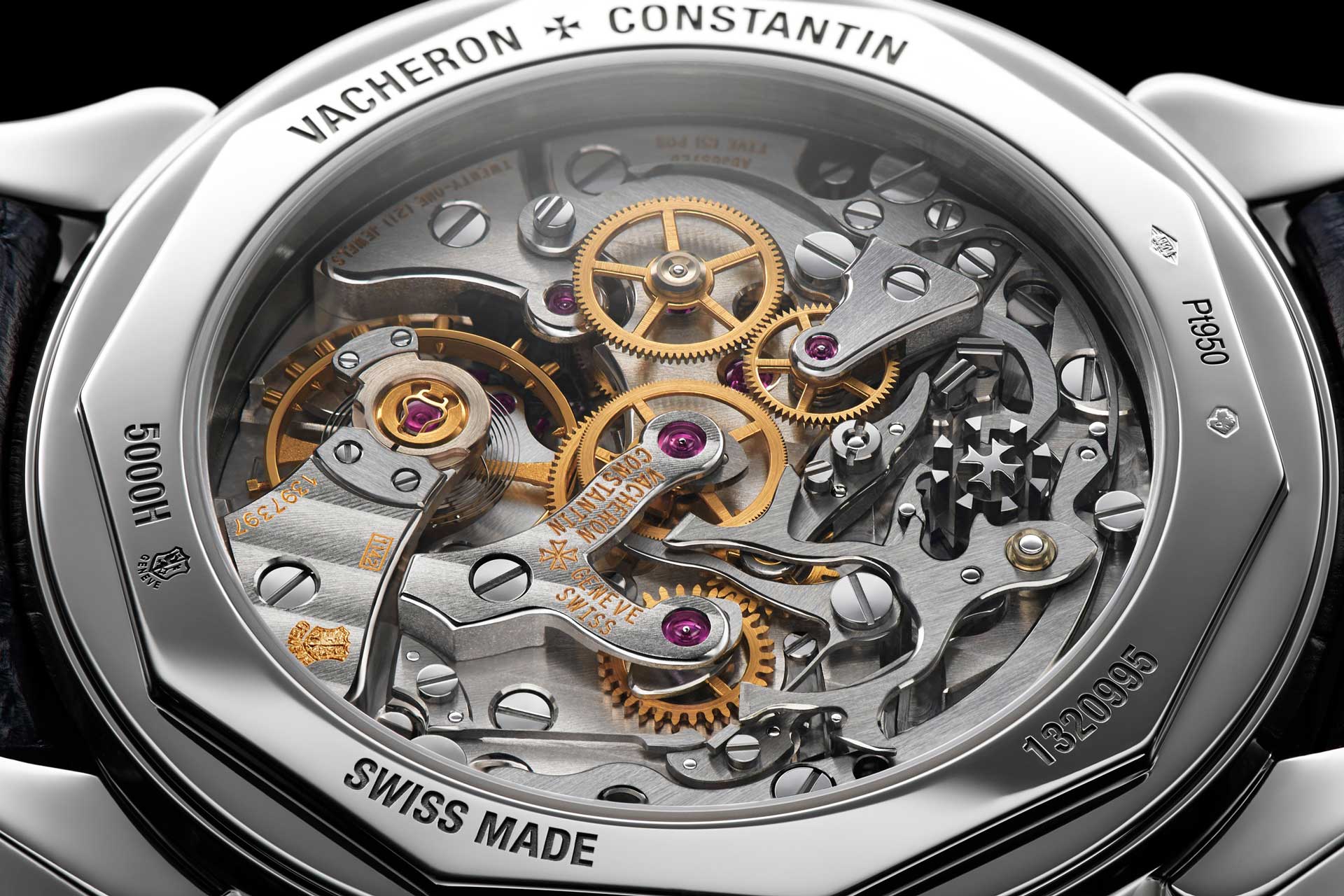Technical
Pocket Guide: Column & Cam-Wheel Chronographs
The Column Wheel
The column wheel, as the name implies, is a small fluted column located inside a watch movement. Various “fingers” connected to levers controlling the start, stop, reset and even fly-back functions of a chronograph rest on this column. Each time the column wheel rotates, these varying fingers either drop into the space between flutes or are lifted up by the flutes. Correspondingly, this activates the varying different functions of the chronograph.
To illustrate how the column wheel chronograph functions, let’s first label the important parts of the movement. These parts are usually found on the top of the base calibre when viewing the watch from the back.

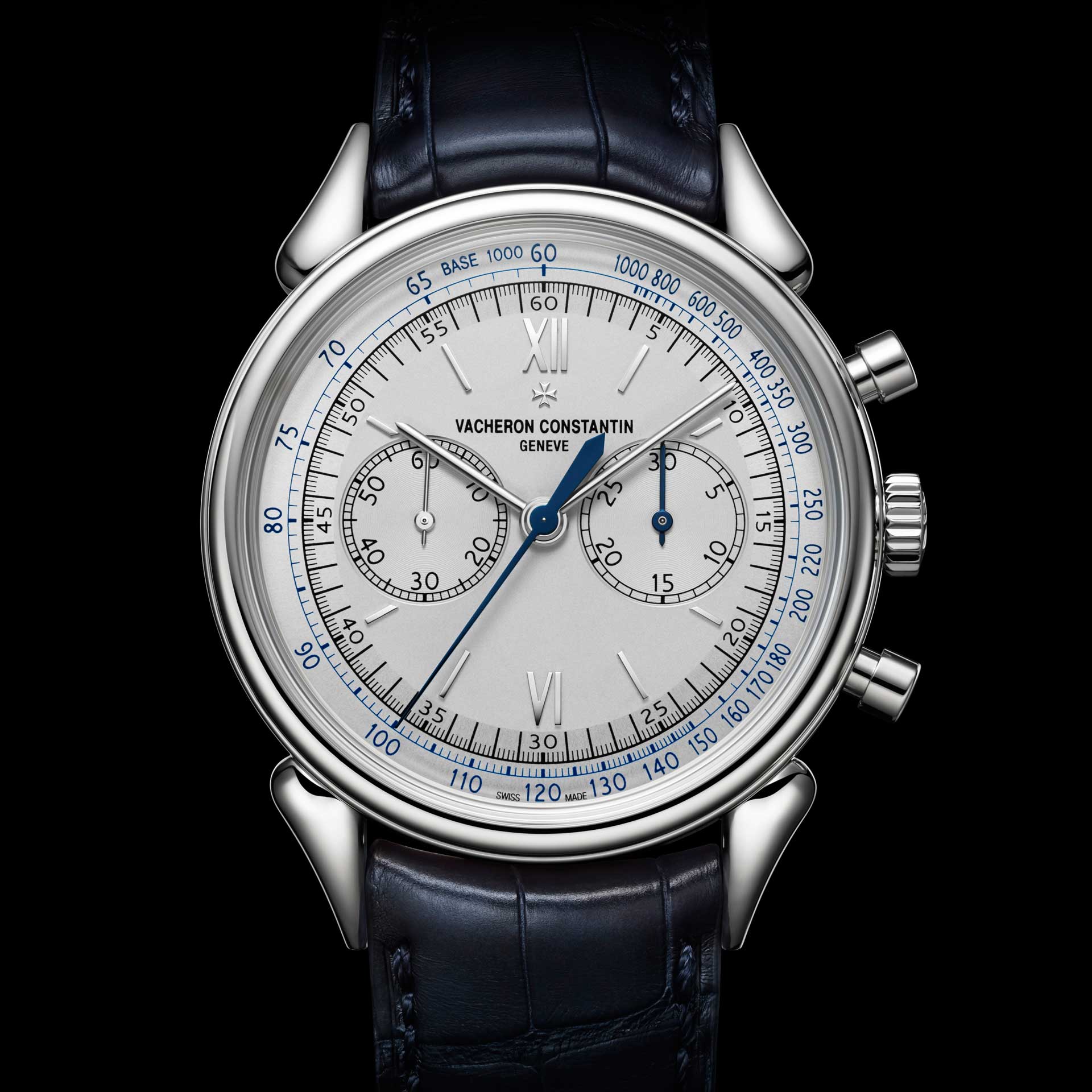
Press this when the chronograph is stopped and your seconds hand will instantly jump back to zero.
C. Column Wheel Lever
This lever transmits the messages sent by the start / stop button to the column wheel. If the chronograph was an army, this would be the fast mounted messenger envoy.
D. Column Wheel
Here it is… the device that initiates all action in a chronograph. Rather than a wheel, think of the column wheel as a small pillar. Running vertically along the pillar are protruding columns that interact with the varying levers controlling the chronograph’s start, stop and reset functions.
E. Chrono Wheel (Central Chronograph Wheel)
This is the wheel that is attached to and powers the sweep seconds hand around the dial.
F. Heart Piece Reset Cam
This allows the chrono wheel and sweeping seconds hand to be set back to zero instantly.
G. Blocking Lever Also Known As Chrono Wheel Brake
This lever stops the movement of the chrono wheel. When this happens, the sweeping seconds hand halts in place.
When the reset button is pressed, this descends and makes contact with the heart piece cam, causing it to reset to the zero position. This action is what causes the sweep seconds chronograph hand to jump back to zero.
This wheel is under power by the movement and turns constantly even when the chronograph is not in use.
J. Transmission Wheel
This wheel is always in contact with the drive wheel and turns constantly even when the chronograph is not in power. It makes contact with the chrono wheel, causing it to start. When contact is removed, the chronograph stops.
K. Chrono Coupling Arm
This brings the transmission wheel in contact with the chrono wheel, causing the chronograph to start.
L. Column Wheel Lever Hook
This hook grabs on to the teeth of the column wheel situated at its base.
M. Finger Chrono Wheel Brake
N. Finger Chrono Coupling Arm
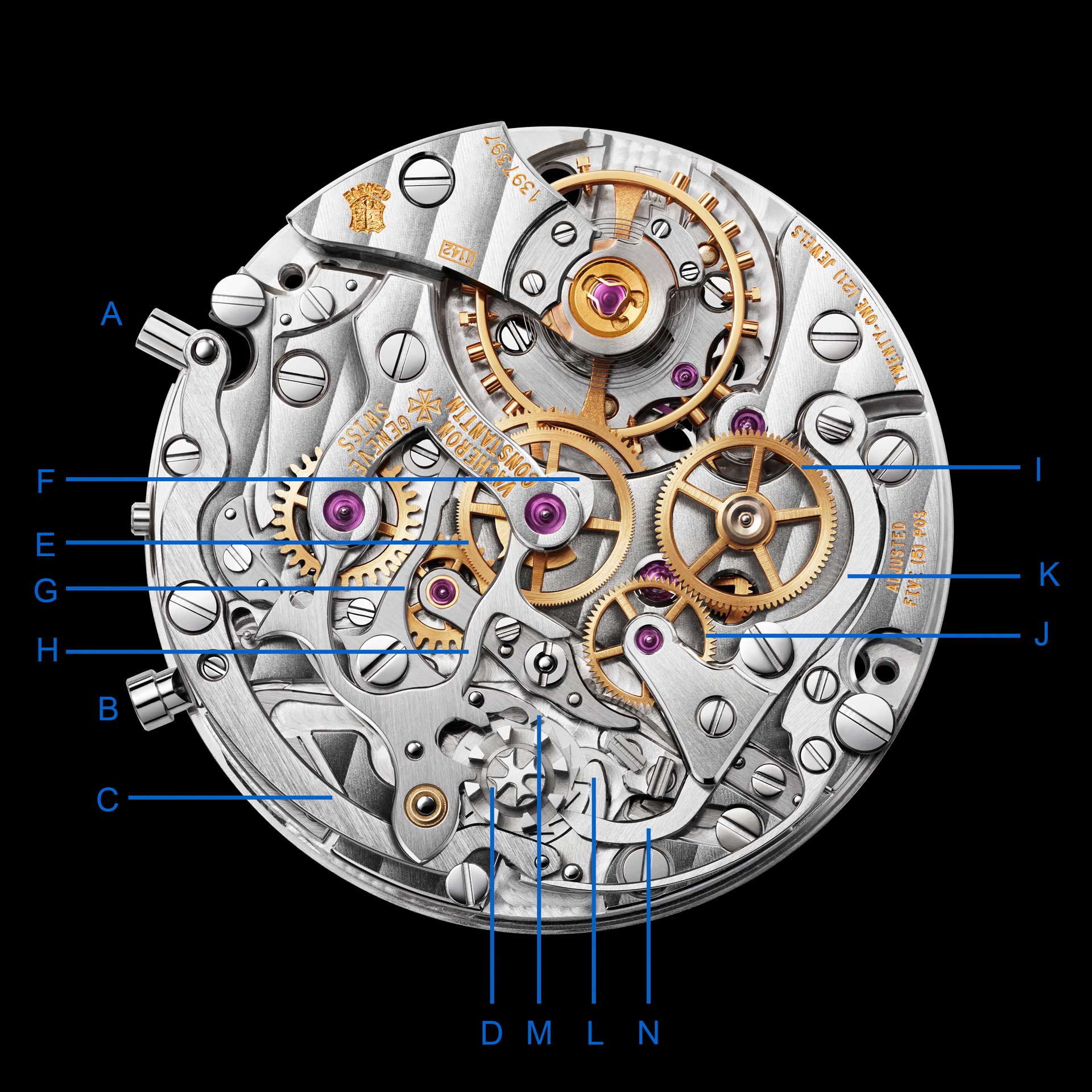
Starting
When you start your chronograph by pressing the start button (A), the column wheel lever (C) moves and causes the column wheel hook (L) to rotate the column wheel (D) forward by one turn. Several things then happen in rapid succession to start the chronograph.
The rotating columns of the column wheel contact the finger (M) of the chrono wheel break (G), causing it to lift and release the chrono wheel. An instant after this, the column wheel contacts the finger (N) of the chrono coupling arm (K) and causes this arm to move clockwise slightly, just enough so that the transmission wheel (J) contacts the chrono wheel (E). This caues the chrono wheel to rotate, which on the dial side of the watch translates into the chronograph seconds hand starting.
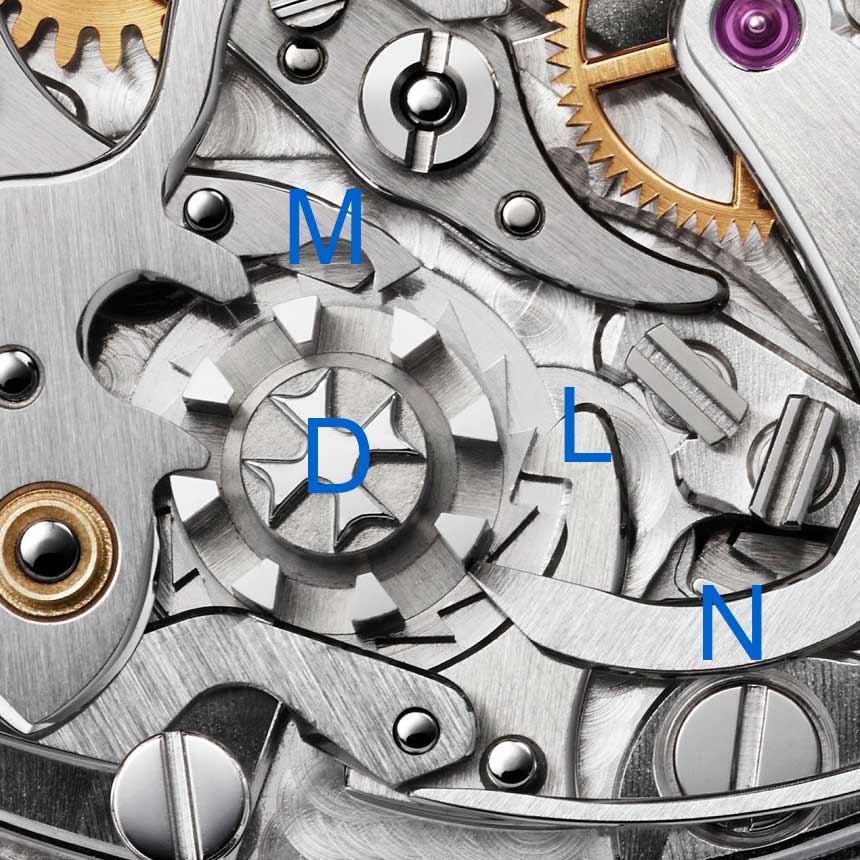
Stopping
When you press the stop button (A) of the chronogaph, the column wheel lever (C) causes the column wheel hook (L) to engage the teeth at the base of the column wheel (D). This makes the column wheel rotate. The column wheel (D) engages the finger of the chrono coupling arm (N) and causes the transmission wheel (J) to disengage from chrono wheel (E).
Just an instant after, the column wheel engages the finger (M) of the chrono wheel break (G) and causes it to clamp down on the wheel (E). On the dial side, this means your sweeping seconds hand stops.
Reseting
When you press the reset button (B) the column wheel (D) rotates, to the next position. It releases the brake (G). At the same time it causes the reset lever (H) to strike the heart piece cam (F) , causing the chrono wheel (E) to spring back to zero. On the dial side, the effect is that you’ll see the seconds hand leap back instantly to zero.
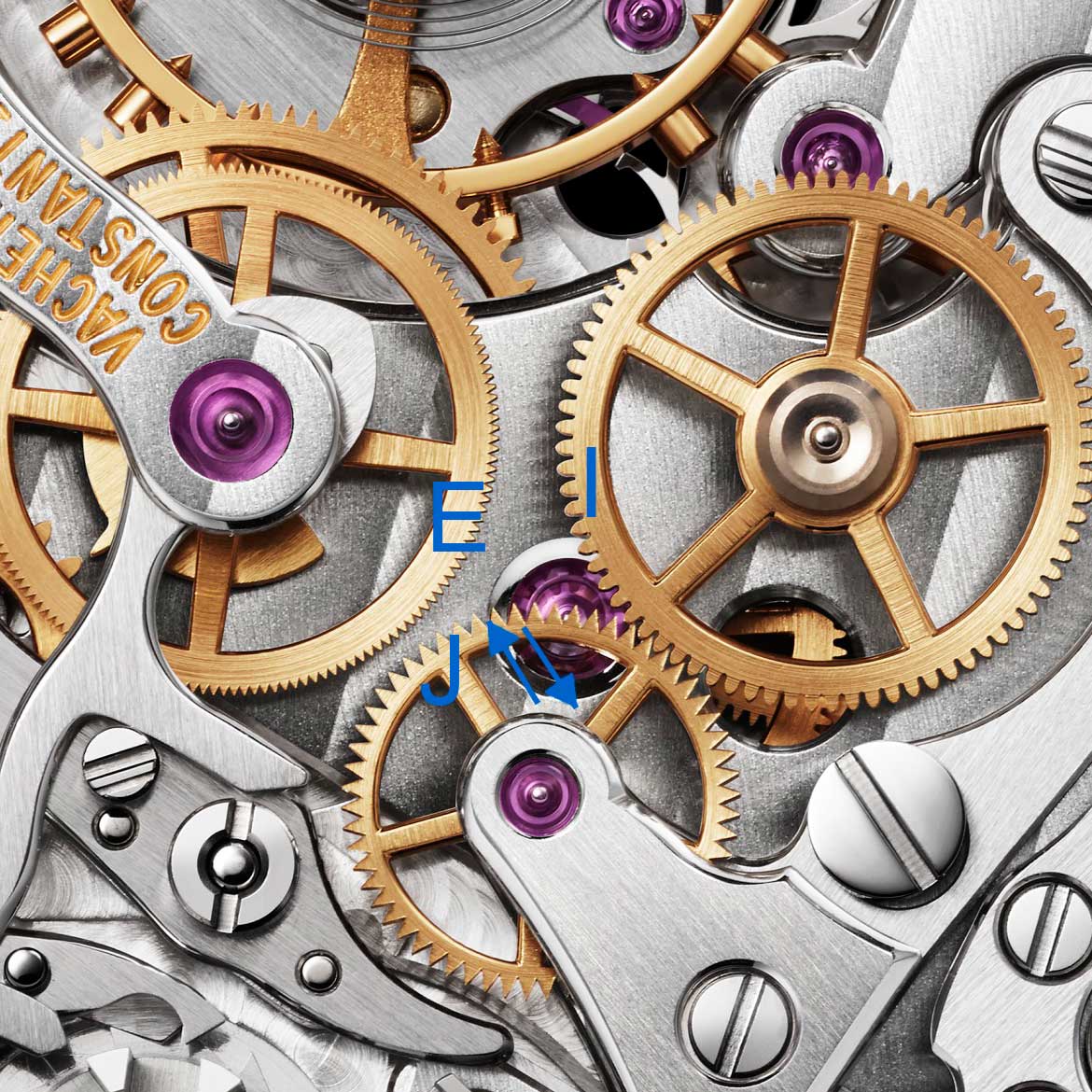
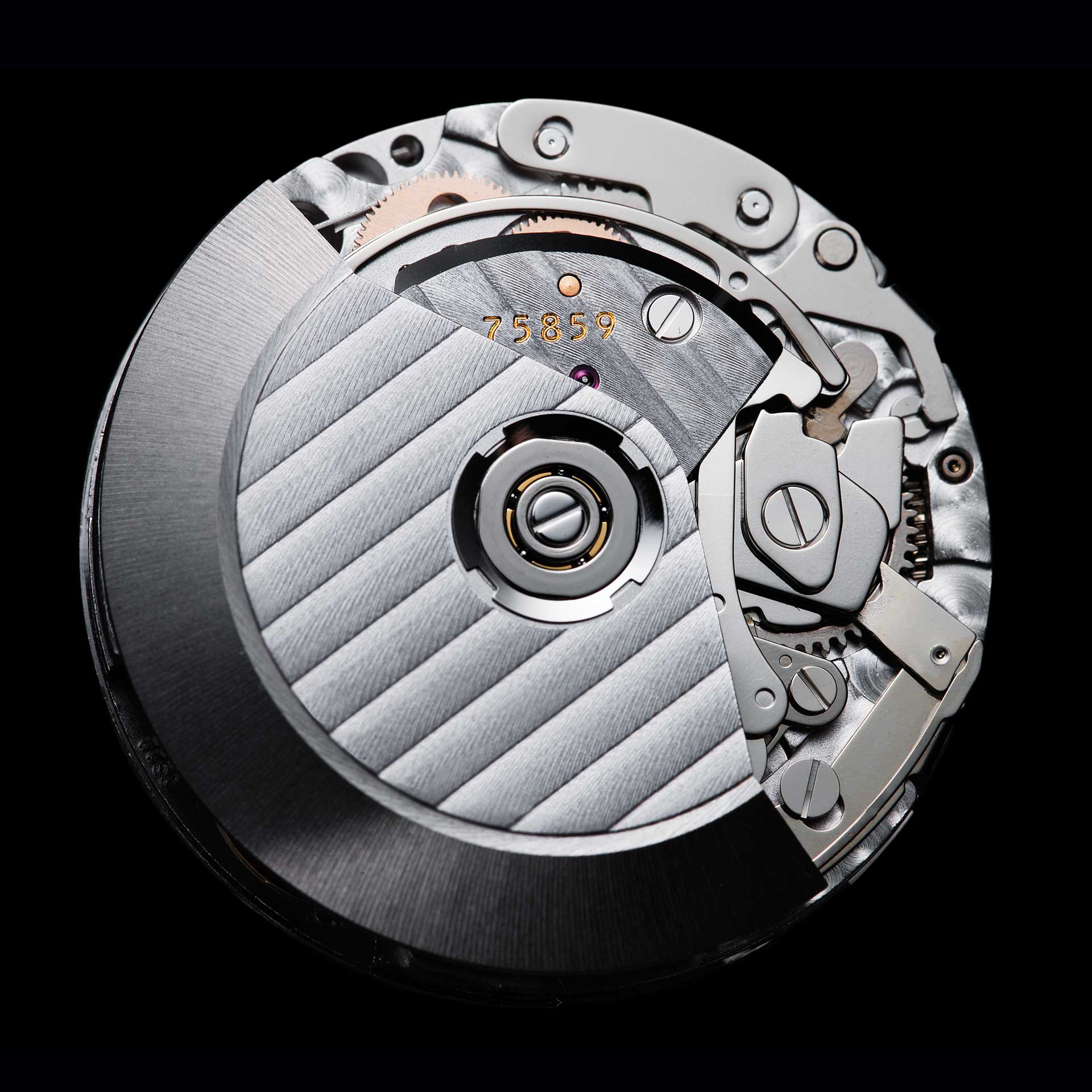
The Lever/Cam Actuated Chronograph
It was mass production that resulted in the advent of the cam-operated chronograph. In the early part of the 20th century, a company called Ebauches SA attempted to unite all the major producers of raw movements. One of the company’s aims was to reduce the price of chronographs to make this complication more of an ‘everyman’s’ timepiece. But there was one major hurdle standing in the way. This was the column wheel.
While all the other parts of the chronograph could be cheaply stamped out, the column wheel still necessitated a lot of handworkmanship. This was a nagging pain for Ebauches SA until it came up with a method of replacing the column wheel with a lever-and-cam system. This system uses a heart-piece or cam that is switched between three positions during start, stop and reset functions.
Today, the most ubiquitous cam-system chronograph movement on the market is the Valjoux 7750. Many chronograph watches available, from the low to the middle range in price, are powered by this calibre and its family of variants such as the Valjoux 7751 (which adds a full calendar to the basic chronograph).
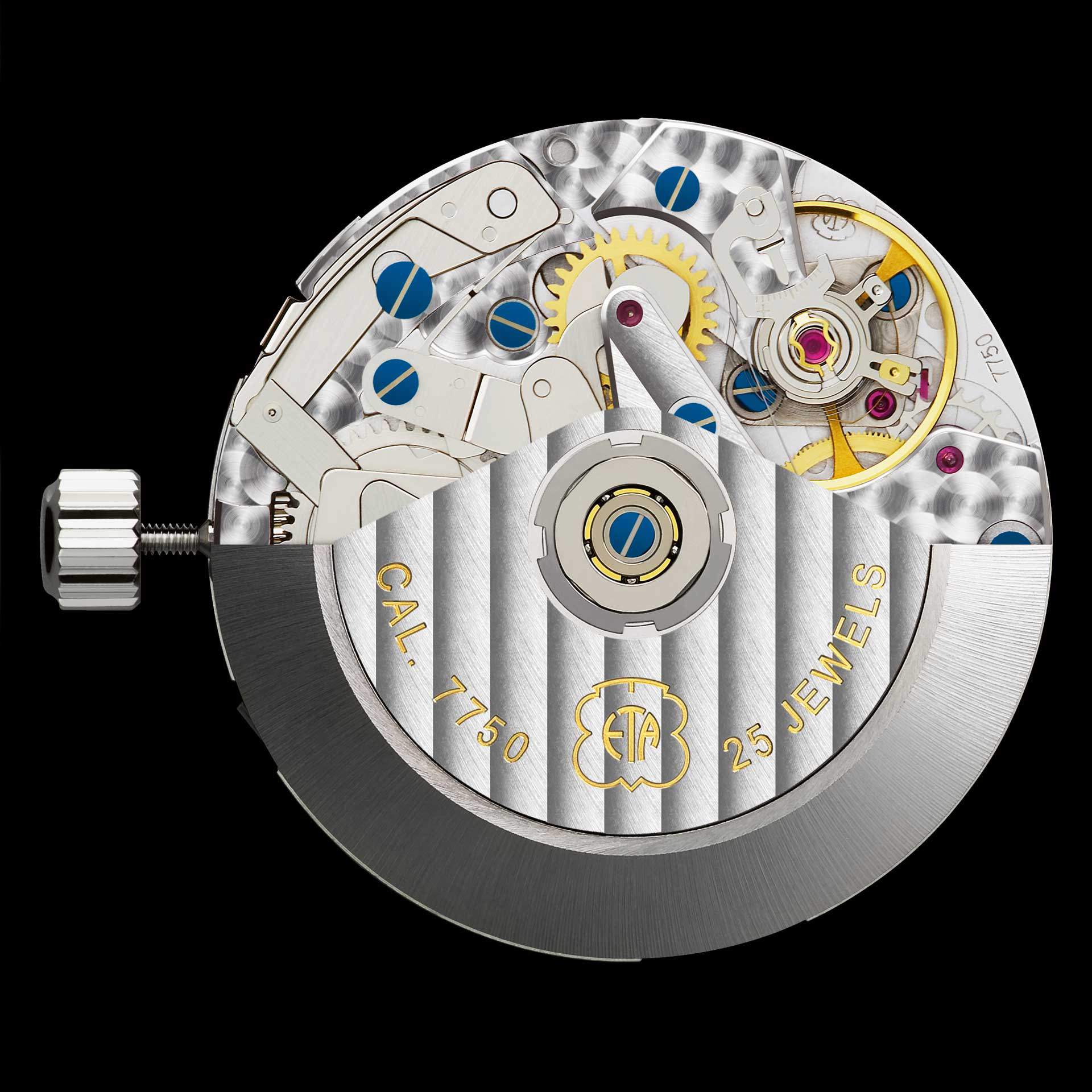
The cam itself within the Valjoux 7750 is essentially made of two parts that are fixed together, the upper cam and lower cam. The lower cam engages the start/stop functions (controlled by the same pusher) whereas the upper cam engages the reset function.
It is easy to see how the cam system is simpler and more robust, with its contact surfaces allowing more positive engagement. The column wheel by contrast is a wheel with its ratchet teeth being the same size, meaning the levers that engage them have to be adjusted more precisely to ensure proper function.
Which is better? It depends on whom you’re asking. The cam system offers a robust, dependable, more easily-manufactured chronograph for everyone. While the column wheel expresses what we love about watchmaking, when we have sought out complexity for its ability to astound.
